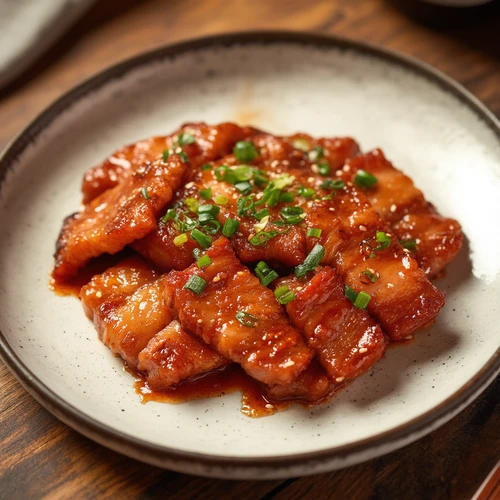Korean cuisine is celebrated worldwide, and one of its star ingredients is pork. From thinly sliced marinated Bulgogi to flavorful pan‑grilled Samgyeopsal, and hearty Kimchi Pork Stew, Korean pork dishes offer a spectrum of textures and aromas that delight the senses.
In Korean households, pork is often the centerpiece of both casual family dinners and festive gatherings. The versatility of pork cuts—ranging from tender belly slices to lean shoulder—allows chefs to adapt each dish to different cooking methods. The secret lies in the balancing act of sweet, salty, spicy, and umami flavors that Korean marinades and sauces masterfully deliver.
One of the most iconic pork dishes is Bulgogi, which literally means “fire meat.” The marinated slices are typically grilled or stir‑fried, achieving a caramelized crust that contrasts with the juicy interior. Classic Bulgogi uses soy sauce, sesame oil, garlic, and a touch of sugar, but many variations add Korean rice wine (Makgeolli) or fruit puree for additional depth. It is often served with a side of fresh lettuce, sliced onions, and a dollop of doenjang (fermented soybean paste) for an authentic experience.
Another beloved staple is Samgyeopsal, the sizzling plate of pork belly that diners cook themselves at the table. Thin slices are briefly grilled until the fat renders, then dipped in a simple mixture of salt and pepper or a spicy mustard sauce. This “self‑grilling” ritual is central to Korean social dining, fostering conversation and shared enjoyment. Pair Samgyeopsal with a medley of kimchi, garlic, and chili flakes for an explosion of textures and flavors.
For comfort food lovers, Kimchi Pork Stew ( Kimchi-Jjigae with pork ) is a warming bowl that combines fermented kimchi, pork belly or shoulder, tofu, and scallions. The stew is seasoned with gochujang (red chili paste), garlic, and sesame oil, producing a fragrant broth that is both spicy and savory. It is commonly served with a side of steamed rice and a handful of raw greens for a complete meal.
Below is a step‑by‑step recipe for Bulgogi featuring a precise ingredient list measured in grams to help you achieve the perfect balance of flavors.
- Lean pork sirloin – 300 g
- Soy sauce – 30 g
- Sesame oil – 15 g
- Brown sugar – 10 g
- Gochugaru (Korean red pepper flakes) – 5 g
- Fresh garlic, minced – 10 g
- Onion, minced – 20 g
- Scallions, sliced – 15 g
- Fresh ginger, minced – 5 g
- Black pepper – 2 g
- Sesame seeds – 3 g
Preparation
Slice the pork into thin strips. In a bowl, whisk together soy sauce, sesame oil, brown sugar, gochugaru, garlic, onion, ginger, black pepper, and sesame seeds. Marinate the pork in this mixture for at least 30 minutes, ideally overnight in the refrigerator.
Heat a skillet over high heat. Add the marinated pork and stir‑fry quickly until the meat is cooked and nicely caramelized. Serve hot with steamed rice, fresh lettuce, and a drizzle of sesame oil. The result is succulent, flavorful meat that showcases the elegance of Korean pork cuisine.
Beyond these specialties, Korean pork recipes extend to crispy fried pork cutlets, sticky pork ribs, and even sweet‑spicy pork stir‑fries. Whether you’re a novice cook or a seasoned chef, exploring Korean pork dishes offers a rewarding journey into one of the most vibrant and approachable culinary traditions in the world.


